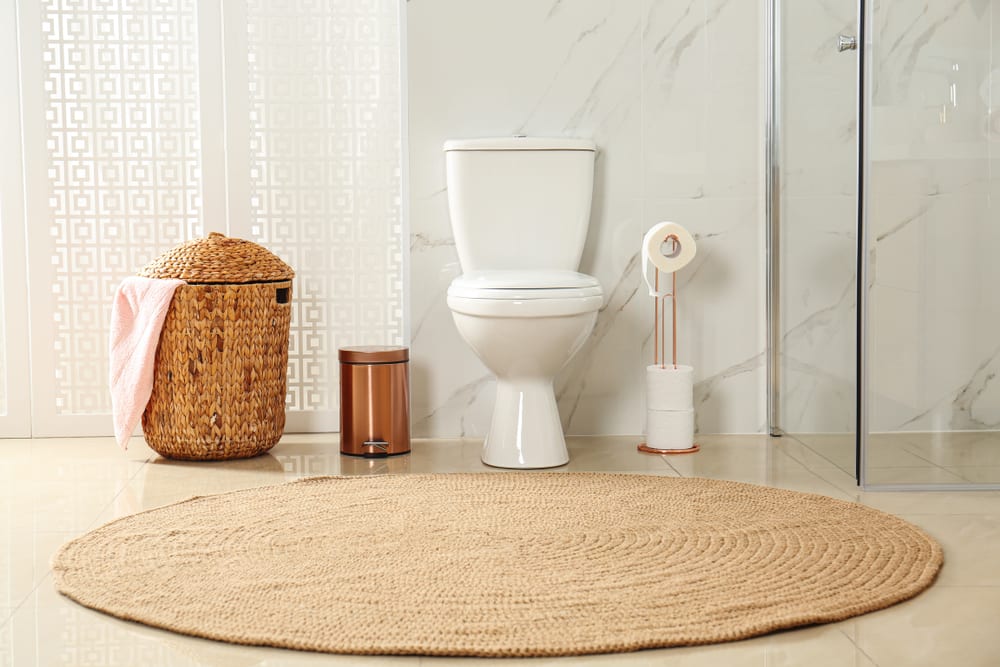
There are a large variety of objects and materials that are capable of causing moderate to severe toilet clogs in your bathroom. The toilet and plumbing system in your home are only designed to dispose of waste materials and toilet paper. To avoid a clogged toilet, we recommend tossing all other types of hygiene products in the trash. To help you prevent damage to your sewer pipes, we have created a list of the main causes of clogged toilets. In addition, we have created a summary of ways to fix a clogged toilet in your home.
Table of Contents
What Can’t You Flush Down the Toilet?
While most types of toilet clogs are easy to fix by using a toilet plunger or snake, other types are may require a professional. To avoid an expensive toilet installation or repair project, please refrain from flushing the following 12 objects and materials down your toilet.
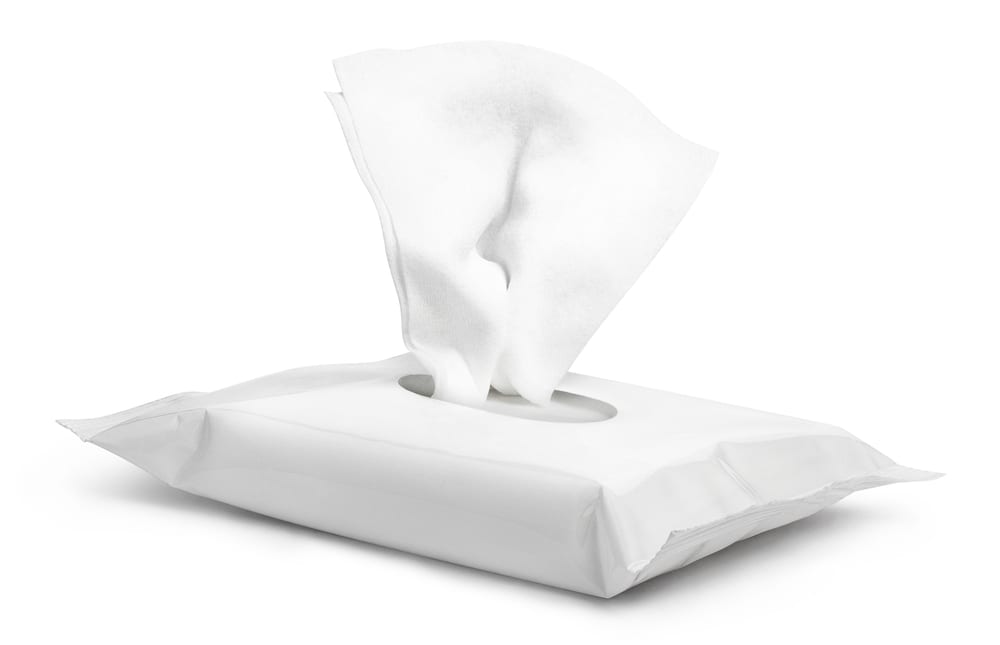 Wet Wipes
Wet Wipes
Never flush wet disposable wipes down the toilet in your home. Despite what you may believe, wipes do not break apart in water when they are flushed. As a result, wet wipes are a common cause of toilet clogs in residential and commercial settings.
If you decide to flush wipes down the toilet, you should make sure to use only one or two wipes at a time. Using an excess amount of wet wipes will cause your toilet to clog and overflow. There are special types of wipes that are designed to be more easily flushed and aren’t usually significantly more expensive..
Ultimately, it is recommended to dispose of wet wipes in a plastic bag in your trash to avoid a sewer line backup.
Related Article: What Is the Purpose Of the Pipe Beneath My Sink?
Feminine Hygiene Products
If your toilet is clogged, this may be caused by feminine hygiene products such as pads and tampons. Pads and even liners are not, in any way, meant to go down in a drain. They are meant to be folded up and placed in a waste basket.
Tampons are a little more complex. There are some forms of tampons that are made to be flushed and others that cannot be. However, even the tampons that can be flushed should be flushed separately rather than with toilet paper. Otherwise, the toilet paper and the tampon could get tangled together and create a clog.
Hair
Excess hair is responsible for most toilet and drain problems in the nation. Once hair is pushed down a drain, it becomes stuck on solid materials in your sewer or water pipes. Over a short period of time, this will cause your toilet to clog.
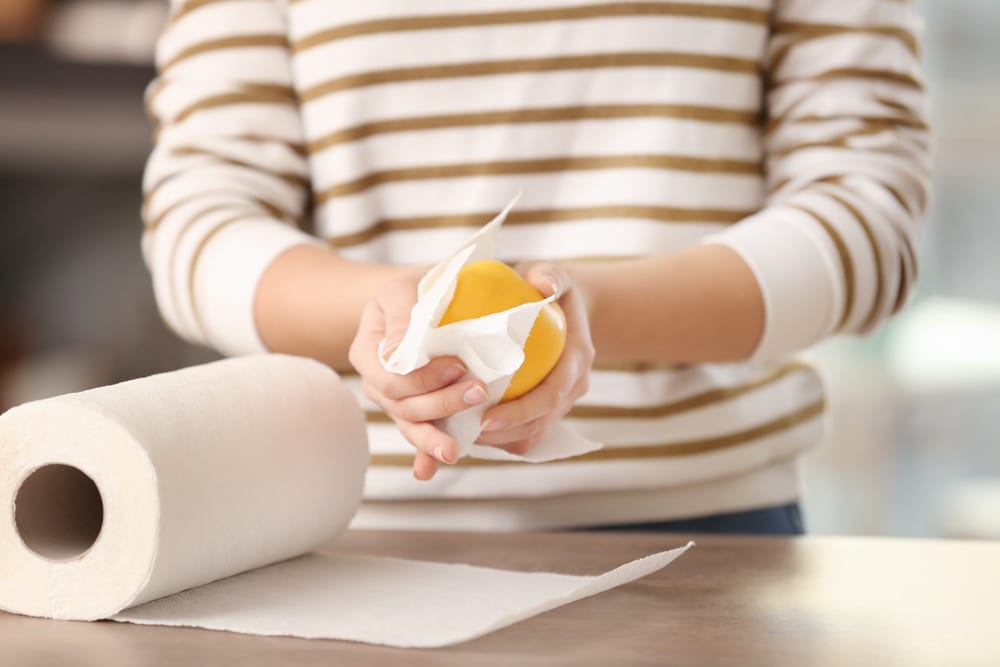 Paper Towels
Paper Towels
When cleaning the bathroom, it can become natural to throw paper towels in the toilet rather than the waste basket. If the toilet in your bathroom keeps clogging, it may be due to paper towels. Since paper towels are designed to be tough and resistant to liquids, they won’t break down once they are flushed.
To ensure your toilet does not get clogged with paper towels, it’s important to place your dirty paper towels in a plastic bag and then place the plastic bag in your trash. In addition, you can throw the contaminated paper towels into a dumpster to prevent clogs in your sewer pipes. You should never toss paper towels into your toilet. For a more environmentally friendly solution, you might even consider using rags or sponges in place of paper towels.
Ear Swabs
Although ear swabs are small, they are responsible for large clogs in residential sewer lines. Since a cotton swab features a straight form factor, it will get fastened in the bends connected to your plumbing lines.
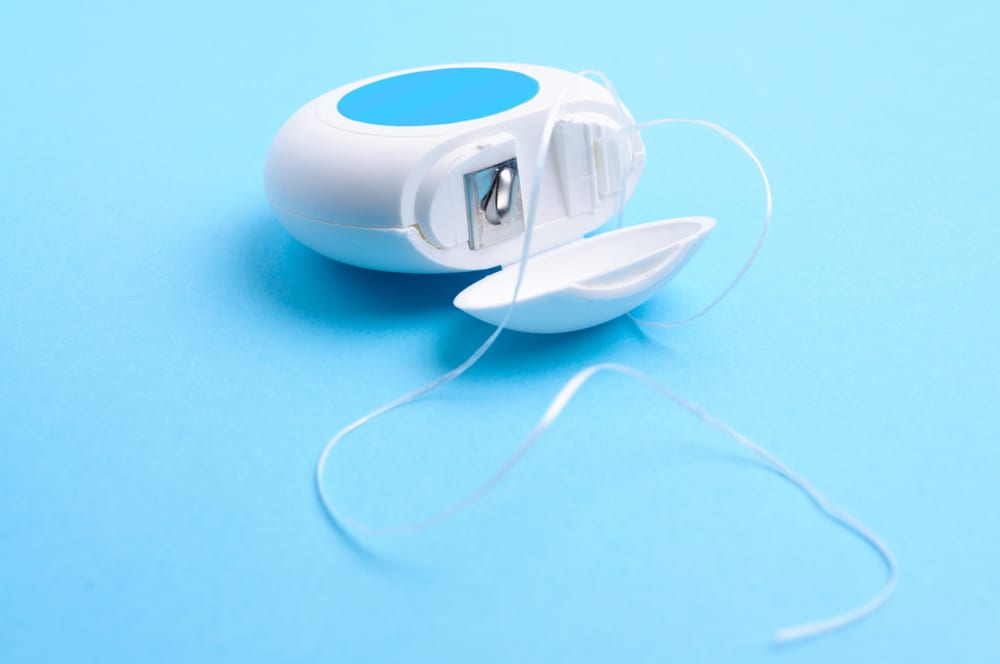 Dental Floss
Dental Floss
Once you are finished flossing your teeth twice a day, it is important to dispose of the used floss in a trash container. If this material is flushed down a toilet or sink drain, it may become struck on objects, grease, and materials in your pipes. To save time and money fixing a clogged toilet, we recommend purchasing a cheap trash can to add to each bathroom in your home.
Fabric Softener Sheets
While fabric softener sheets may be useful while you’re doing laundry, they are capable of causing drastic issues in your pipes. Since these dryer sheets do not disintegrate in water, they may cause a backup of water or clogged toilets. To fix a clogged toilet, use a plunger or snake to dislodge the fabric softener sheet from the drain line.
Related Article: 5 Common Tankless Water Heater Issues & Tips
Condoms
Never flush used condoms down the toilet in your house. Instead, dispose of them in your garbage can. These products are manufactured with latex and won’t disintegrate for years. Since condoms do not disintegrate in water, they will cause your toilet to clog.
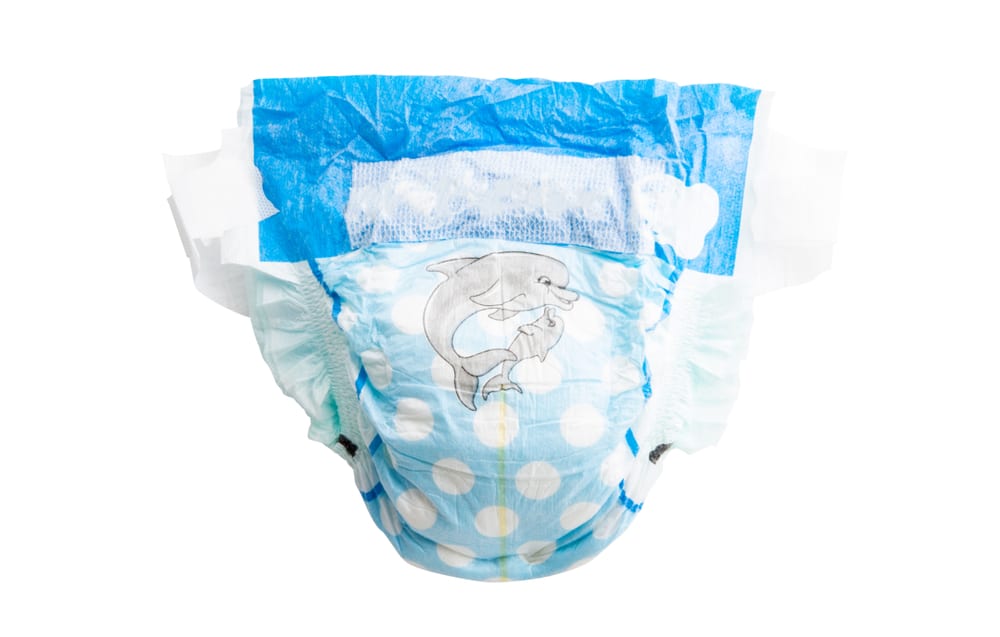 Disposable Diapers
Disposable Diapers
Despite what the packaging may claim, the toilet in your home is not designed to flush disposable diapers. The proper way to get rid of contaminated diapers is place them in a sealable bag prior to throwing them in the trash.
Kitty Litter
Since kitty litter is designed to transform into large lumps once it is used by your pet, it will become stuck in your sewer line once it is flushed. We recommend disposing of kitty litter in your trash. To prevent noticeable odors in your garage, we recommend keeping the contaminants in a garbage can on the side of your house or outdoors.
Silt & Dust
Many people, especially those that have traditional mops, will empty out their mop bucket into the toilet rather than anywhere else. This allows them to dispose of soiled water in a sanitary way, but it’s very bad for the toilet.
When you are emptying out a mop bucket or other dirty water, it’s best that you dispose of it outside rather than putting it in your toilet. Eventually, you could be looking at an expensive project to fix your clogged toilet.
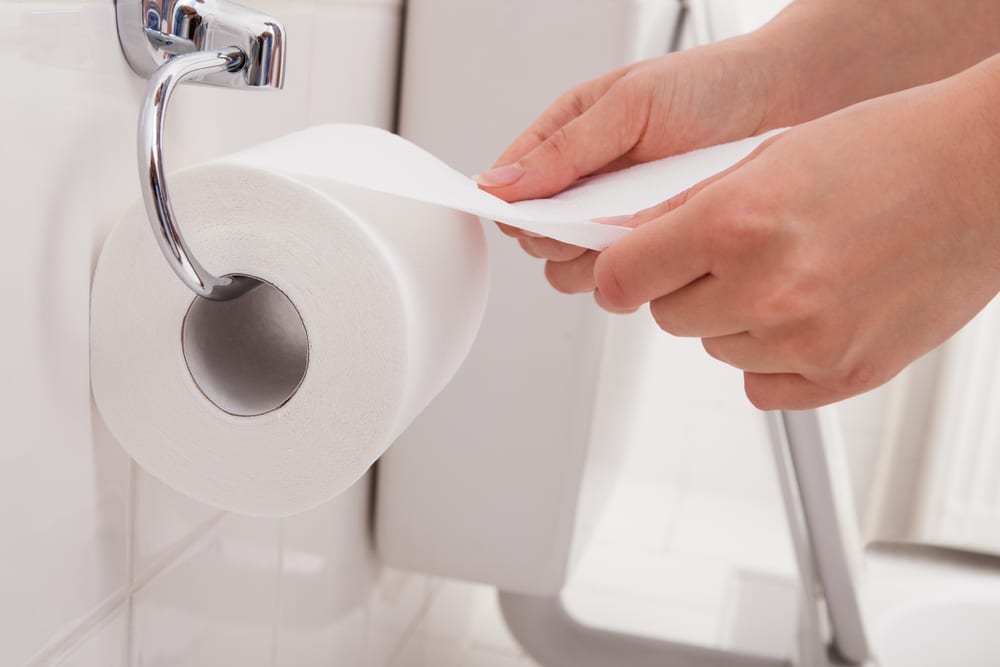 Too Much Toilet Paper
Too Much Toilet Paper
Above all, the most common type of toilet clog is caused by too much toilet paper. Many people get into the habit of using more toilet paper than they truly need. To prevent a toilet clog, you will need to make sure to only use as much toilet paper as is necessary.
Not only will this allow you to avoid calling for emergency plumbing in your Jacksonville FL home, but it will also help the environment. Once you build up the habit of using only as much toilet paper as you need, you’ll find that it becomes natural.
Ways to Fix a Clogged Toilet
Pull the Flapper Valve
Prior to grabbing a plunger from your utility room to fix your clogged toilet, we recommend trying to decrease the amount of water in the bowl. First, we suggest lifting the lid off your toilet and placing it on the floor. Next, pull the flapper valve in an upwards direction to allow additional water into the toilet bowl. If the toilet is operating properly, this should fix the clog and cause the water to be pushed out of the bowl. This tip may not be useful in all types of situations. If this doesn’t resolve the toilet clog, there are a variety of other methods you can utilize to unclog the system.
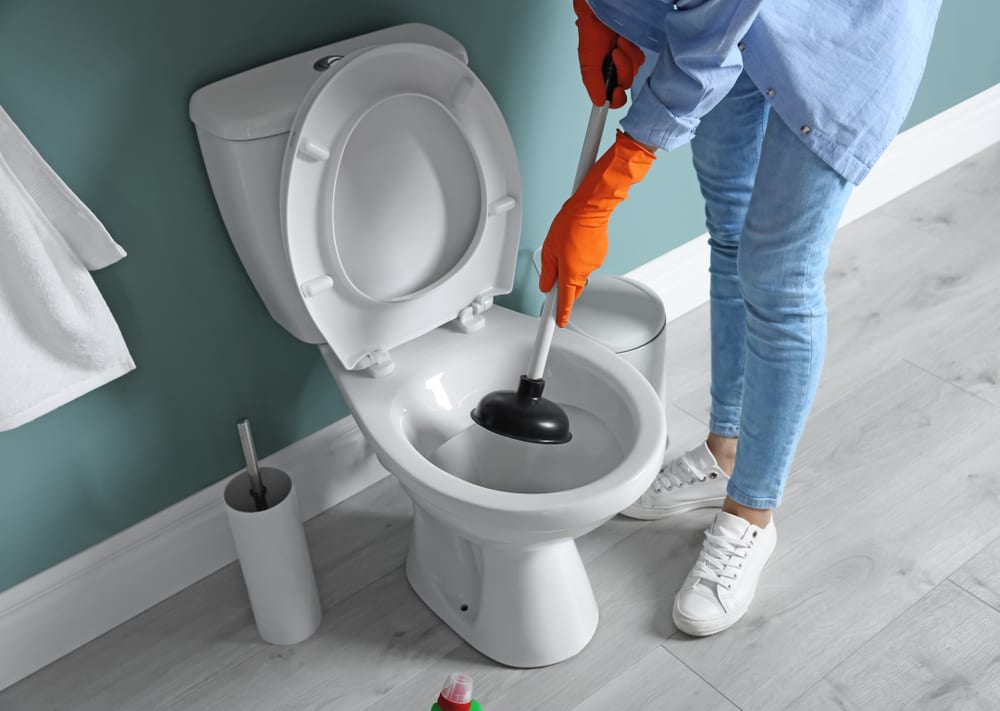 Grab a Toilet Plunger
Grab a Toilet Plunger
If the toilet keeps clogging in your master or guest bathroom, we recommend using a plunger to dislodge the obstruction from your plumbing system. The most useful type of toilet plungers will include an extension flange that is designed to loosen objects that may be stuck in the sewer line.
Once you have grabbed the plunger, you will need to deliver the first plunge using moderate force. The first push will eliminate the excess air in the plunger. Next, forcefully push the plunger upwards and downwards to fix the clogged toilet and dislodge the objects from the drain line. The plunger will cause the water in the sewer line to move in a variety of directions.
This excess motion will forcefully unfasten the object from its position and will fix your clogged toilet. If your toilet remains clogged after 5 – 7 minutes, we recommend contacting a professional plumber to resolve the problem.
Related Article: Why Is My Furnace Turning On & Off Every 5 Minutes?
Use a Toilet Snake
If you are unsuccessful with the toilet plunger, grab or purchase a toilet snake to fix your toilet clog. A toilet snake is a long cable with a circular head that is engineered to be pushed through your sewer line. To fix a clogged toilet, rotate the toilet snake in a clockwise motion until it reaches the object that is causing the congestion.
The circular tip of the toilet snake will move towards and through the object to dismantle it. This will restore the flow of water from the toilet to the plumbing system. Toilet snakes are inexpensive and are usually available at local hardware stores.
Disassemble the Toilet
If the toilet plunger and snake failed to fix your clogged toilet, you will be required to disassemble the toilet to get to the source of the clog. To remove the toilet, you will need to unscrew it from the flooring. Once the clog is eliminated, you should assemble the wax ring and screws to ensure the toilet base is installed correctly.
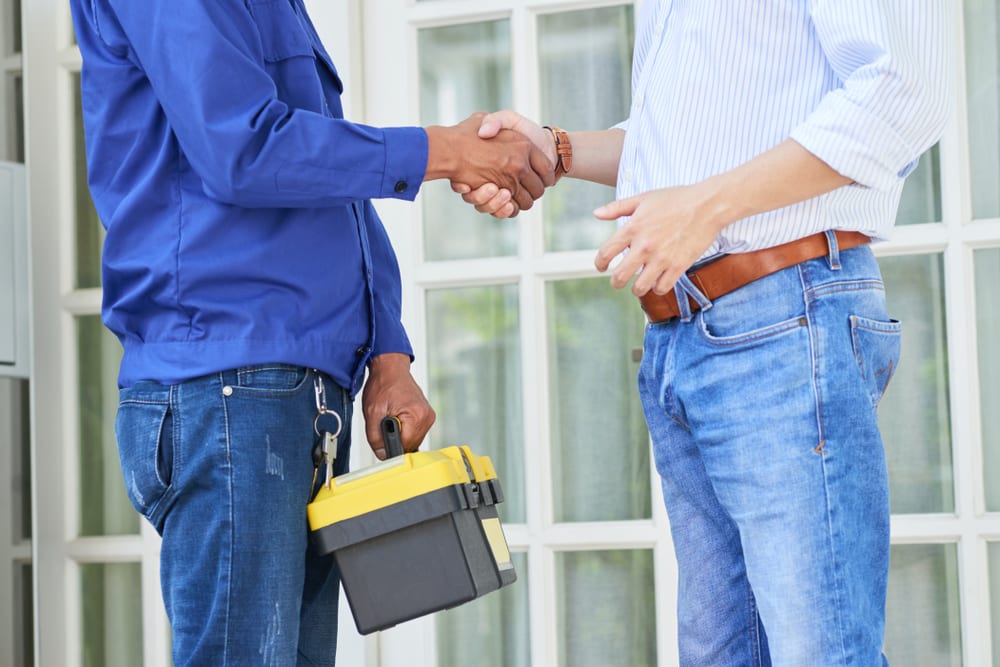 Dependable Plumbing Repair Services Near You
Dependable Plumbing Repair Services Near You
If you’re unable to fix a clogged toilet, call a professional and licensed plumber at Fenwick Home Services by phone at 904-217-5694 or book an appointment online. Our team will help you remove excess toilet paper, paper towels, wet wipes, and hair in your sewage pipes to fix your clogged toilet. We offer toilet repair, installation, and replacement services in areas of Florida such as Jacksonville, St. Johns, and Ponte Vedra Beach. Our staff of licensed plumbers offers types of plumbing services such as toilet repair, sump pump installation, water heater repair, gas line replacement, and water line repair. Call a certified technician on our team to receive help with a plumbing or sewer issue.

